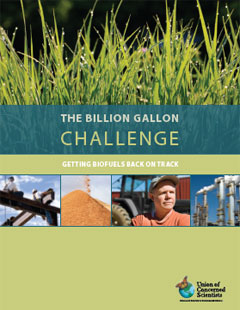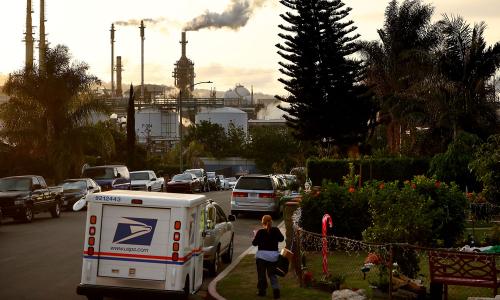Smart bioenergy overview
Use of bioenergy—energy produced from organic matter or biomass—has the potential to increase energy security, promote economic development, and decrease global warming pollution.
But efforts to expand production and use of bioenergy could have unintended economic and environmental consequences. We must therefore strive to develop bioenergy resources in ways that help meet our present challenges without compromising future generations.
Moreover, while smart bioenergy policy can move us in the right direction, meeting the challenge of climate change requires a comprehensive effort, including improved efficiency across all sectors and innovation in bioenergy and other renewable energy and transportation technologies.
The Union of Concerned Scientists’ research and policy efforts are guided by a set of core bioenergy principles to help guide us down the path to a cleaner, more secure energy future. They include:
- Minimize global warming pollution
- Combine bioenergy with efficiency, conservation, and smart growth
- Protect public health
- Promote ecologically sound bioenergy systems
- Ensure bioenergy developments expand economic opportunity
Biomass resources in the United States
The United States has the potential to dramatically expand biomass use for fuel and power. Biomass resources totaling just under 680 million dry tons could be made available, in a sustainable manner, each year within the United States by 2030.
This is enough biomass to produce more than 54 billion gallons of ethanol (four times as much corn ethanol as the United States produced in 2010) or 732 billion kilowatt-hours of electricity (19 percent of total U.S. power consumption in 2010).
The UCS report, The Promise of Biomass: Clean Power and Fuel — If Handled Right, evaluates the four primary non-food sources of biomass — energy crops, agricultural residues, waste materials, and forest biomass — and details the amount of each type of biomass that could be sustainably produced and utilized in the United States without compromising the fertility of agricultural soils, displacing land needed to grow our food, or threatening the health of our farms and forests.
Water use and biofuels
How we choose to produce biofuels—which crops are used, how and where they are grown—can mean the difference between a wise resource strategy and a wasteful and destructive one.
Expanding U.S. biofuel production will require tradeoffs between ambitious fuel production targets and other societal goals, including protection of the water we need for drinking, growing food, preserving aquatic habitats, and producing electricity.
Next generation biofuels made from grass, wood waste, or even garbage can reduce biofuels’ impact on water resources and reduce emissions, but only if we make smart choices.
The billion gallon challenge
Advanced biofuels from diverse sources such as grasses and agricultural waste hold the promise of sustainably reducing U.S. oil dependence and global warming emissions. Unfortunately the advanced biofuels industry not been able to meet the demand as set out in the federal Renewable Fuel Standard (RFS).
The Billion Gallon Challenge is an effort to build the support and policies needed to bring the fledgling advanced biofuels industry to maturity. It also seeks to ensure that the biofuels market maximizes taxpayer investment and helps to strengthen U.S. energy and environmental security.




